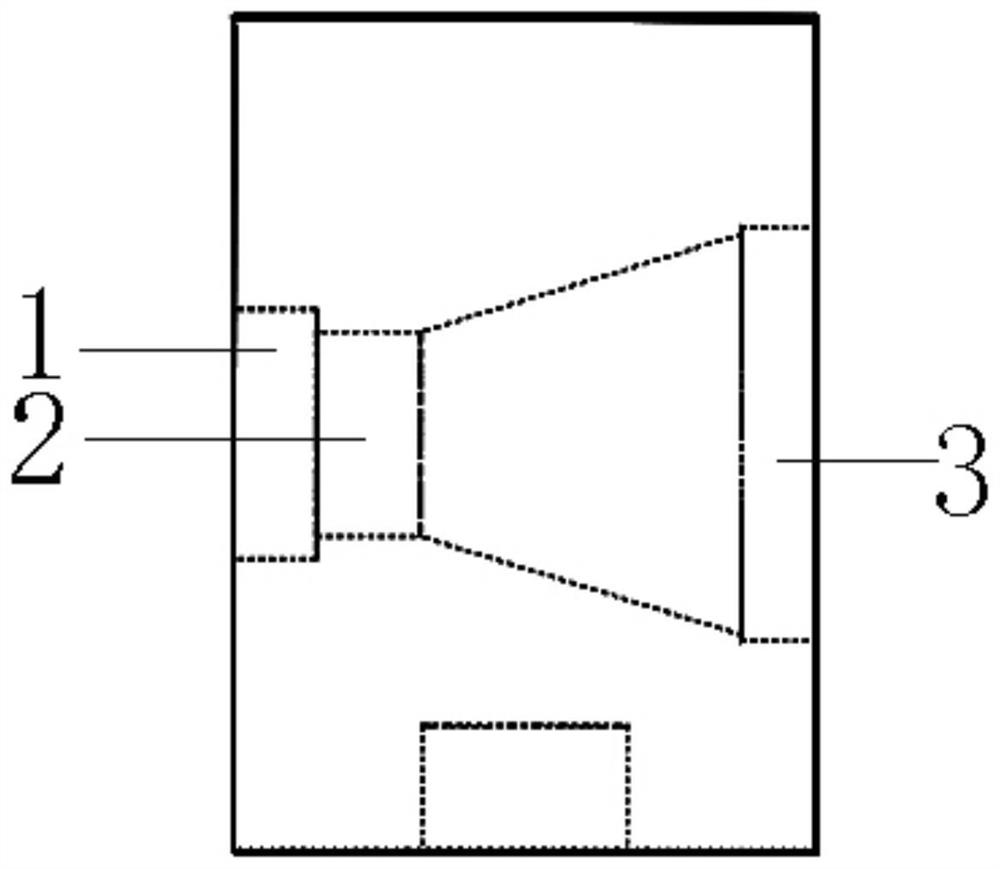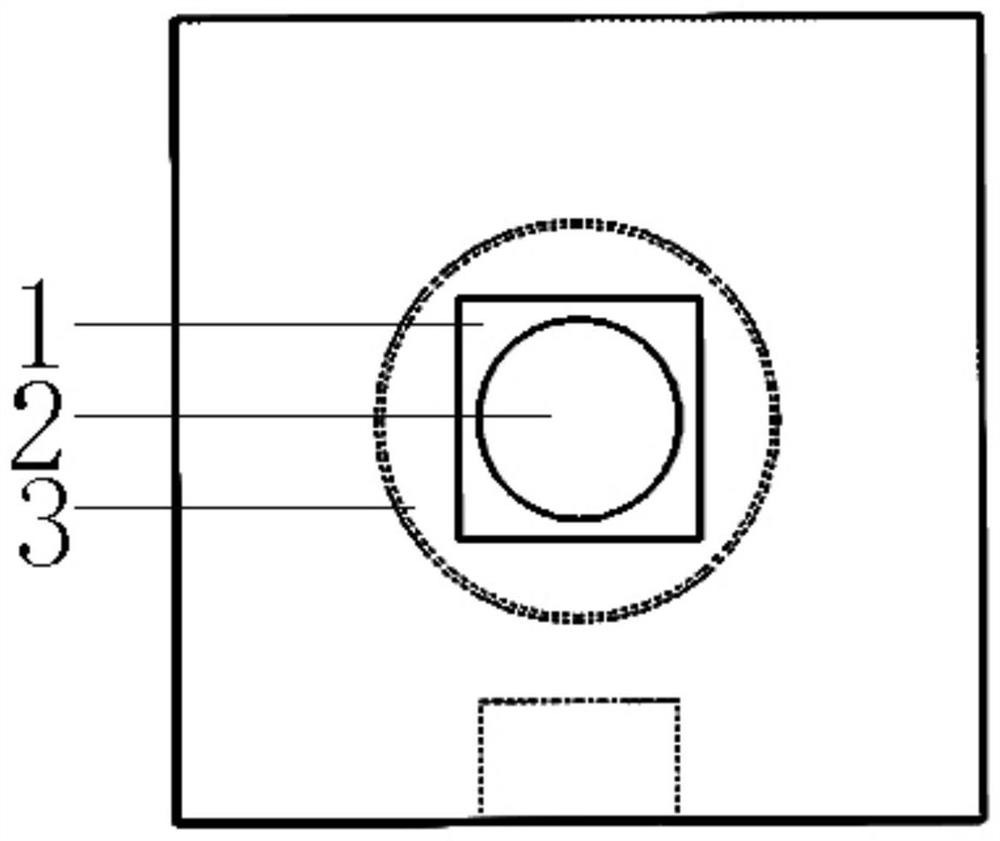A high-efficiency solar-blind ultraviolet light transmitter and receiver system
A receiver and ultraviolet light technology, applied in the field of solar blind ultraviolet light detection, can solve the problems of solar blind ultraviolet light insensitivity, time-consuming operation, large volume, etc., achieve optical path and structural design optimization, improve reliability, and small size Effect
- Summary
- Abstract
- Description
- Claims
- Application Information
AI Technical Summary
Problems solved by technology
Method used
Image
Examples
Embodiment 1
[0048] This embodiment is used to demonstrate the use of the present invention to directly detect solar-blind ultraviolet light, using a 278 nm LED as a light source; the photodetector inside the receiver uses an ultraviolet PIN photodiode with a detection range of 210-280 nm, assembled according to the above-mentioned embodiment After the transmitter and receiver, fix the two on the optical table through the screw, and adjust the height of the two to keep them at the same level. Then load the pulse signal source to drive the LED, and use a high-precision multimeter to directly measure the current of the detector pin at the receiver end, and a stable value can be obtained, which is about 3 μA.
Embodiment 2
[0050] This embodiment is used to demonstrate the use of the present invention to indirectly detect solar-blind ultraviolet light. The difference from Embodiment 1 is that the photodetector inside the receiver uses a visible light type PIN photodiode with a detection range of 400-1100 nm. It is assembled according to the above-mentioned embodiment After the transmitter and receiver, fix the two on the optical table through the screw, and adjust the height of the two to keep them at the same level. Insert the NLPC fluorescent glass into the notch on the top of the receiver, then load the pulse signal source to drive the LED, and use a high-precision multimeter to directly measure the current of the detector pin at the receiving end, and a stable value can be obtained, which is about 12 μA.
Embodiment 3
[0052] This embodiment is used to demonstrate the use of the present invention to indirectly detect solar-blind ultraviolet light. The difference between Embodiment 2 is that the light conversion material used is SFS fluorescent glass. The screw is fixed on the optical table, and the height of the two is adjusted to maintain the same horizontal line. Insert SFS fluorescent glass into the slot on the top of the receiver, then load the pulse signal source to drive the LED, and use a high-precision multimeter to directly measure the current of the detector pin at the receiving end, and a stable value can be obtained, which is about 27 μA.
PUM
| Property | Measurement | Unit |
|---|---|---|
| emission peak | aaaaa | aaaaa |
| wavelength | aaaaa | aaaaa |
Abstract
Description
Claims
Application Information
 Login to View More
Login to View More - R&D
- Intellectual Property
- Life Sciences
- Materials
- Tech Scout
- Unparalleled Data Quality
- Higher Quality Content
- 60% Fewer Hallucinations
Browse by: Latest US Patents, China's latest patents, Technical Efficacy Thesaurus, Application Domain, Technology Topic, Popular Technical Reports.
© 2025 PatSnap. All rights reserved.Legal|Privacy policy|Modern Slavery Act Transparency Statement|Sitemap|About US| Contact US: help@patsnap.com



